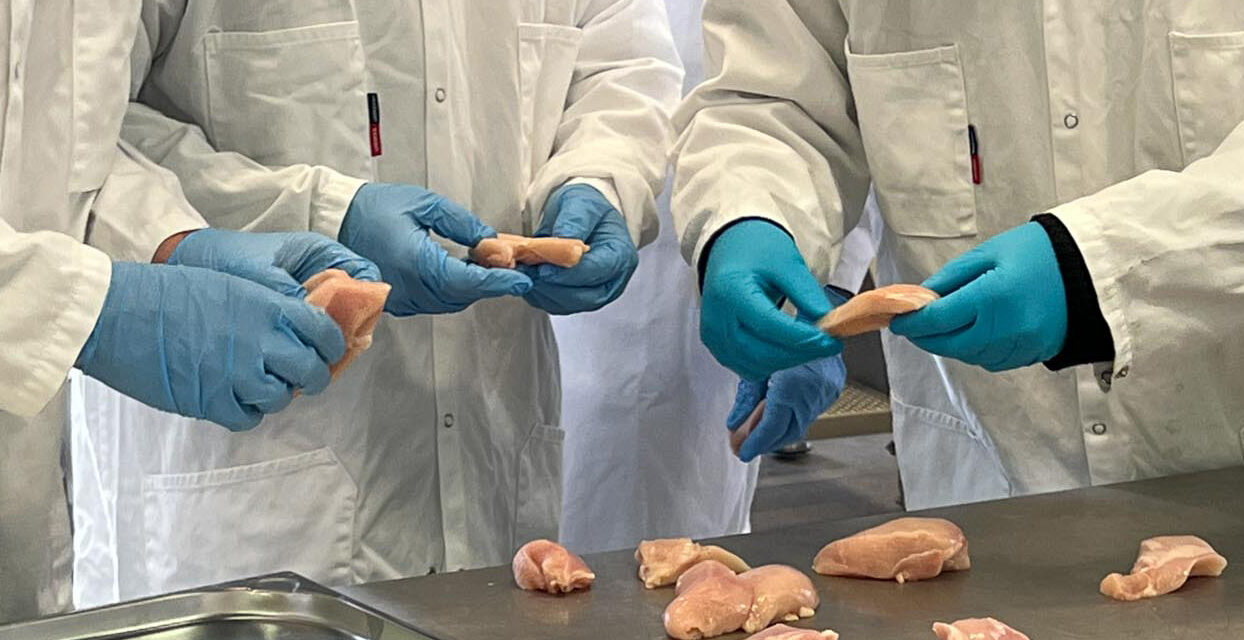Talk to almost any poultry and meat processor today about challenges they face cutting products and common themes show up time and again: exacting customer requirements, maximizing high-value product output by making full use of incoming product, pressure to reduce food waste, and a lack of skilled personnel. Not to mention, high staff turnovers and a lack of space in processing facilities.
For customers across a wide range of product categories, JBT’s new DSI 812 Waterjet Portioner could well provide a workable solution. As highlighted at JBT’s recent DSI 812 Cutting Edge event days and demonstrations, the latest iteration of the best-selling system can deliver benefits on everything from space-saving and automation to improving sustainability and standardizing product shapes and sizing.
The event provided a platform for customers to interact with JBT’s application experts and learn about the new cutting programs and improvements as well as getting live demonstrations on the new DSI 812.
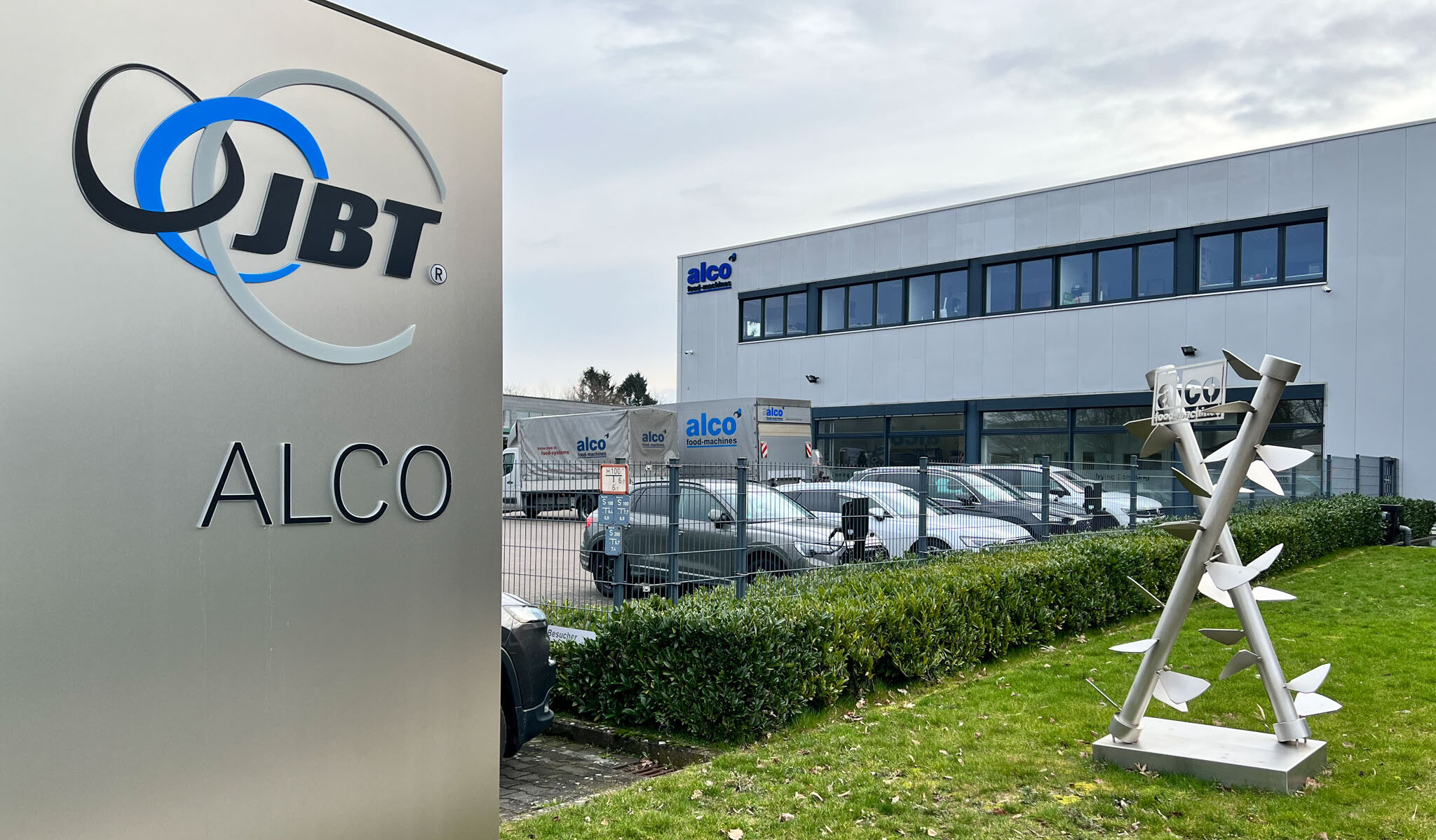
Compact design
The DSI 812 Waterjet Portioner, which comes with a compact design to suit even the most space-restricted facilities, can deliver up to 25% more yield, as well as maximizing utilization, throughput, and flexibility. But what makes the DSI 812 valuable to processors is its capacity to both save on labor costs and get the most out of every cut.
Using JBT’s proprietary DSI Q-LINK™ Portioning Software, the system can generate complex tailor-made cut shapes in any form while still hitting weight and dimension targets.
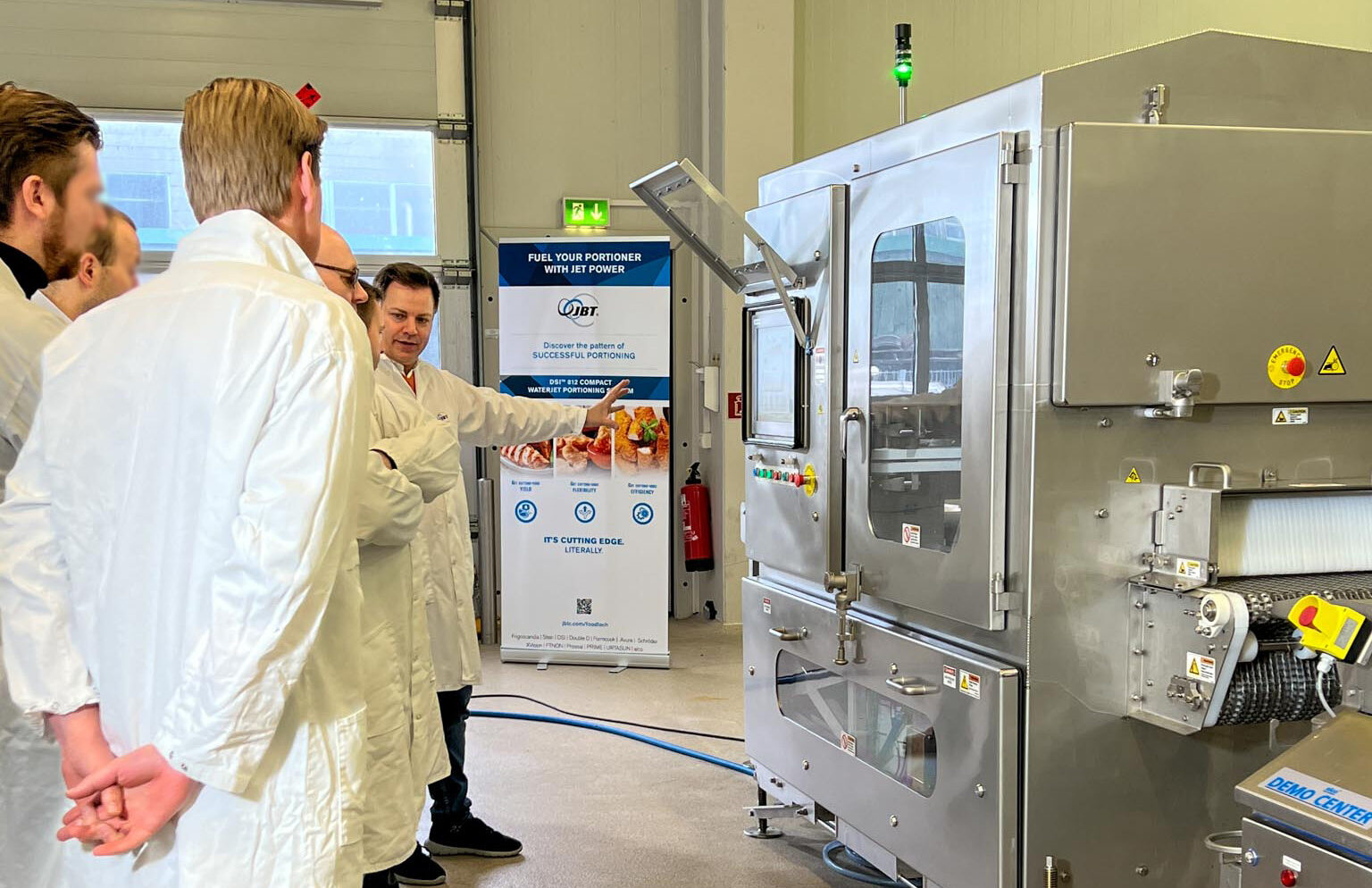
Reducing food waste
For some of Europe’s leading poultry and meat processors, such attributes are already offering major benefits, which are making a real, tangible difference to their businesses.
While taking part in JBT´s DSI 812 Cutting Edge Event, held at the JBT alco Food Technology Center (above) in Bad Iburg, Germany on March 21-23, 2023, one large-scale poultry processor, specializing in burger patties, strips and nuggets, said the waterjet portioner could be used for any application that requires high precision weight and high accuracy on shape.
“We have older cutting technology for burger patties which have a high cut off rate and with the DSI Waterjet technology we can reduce the amount of off-cut/waste which is very important for many of our customers from the sustainability point of view,” the customer revealed. “With the DSI machine we can realise cuts which we could not do before. This has also helped us and given us an advantage in the customer relationship.”
Further than this, the customer said the DSI 812 gave them the opportunity to “cut circles and round shapes”, as well as opening up a wider range of cutting possibilities for chicken breast fillets.
But perhaps most important of all for this particular customer was the compact nature of the Waterjet Portioner, which they said was already making a difference. “The advantage is obviously the size, it is very compact and the built-in pump is very convenient,” the customer said. “Today we use a lot of space for the current DSI machine and the pump also requires extra space. And this is space we don’t have.”
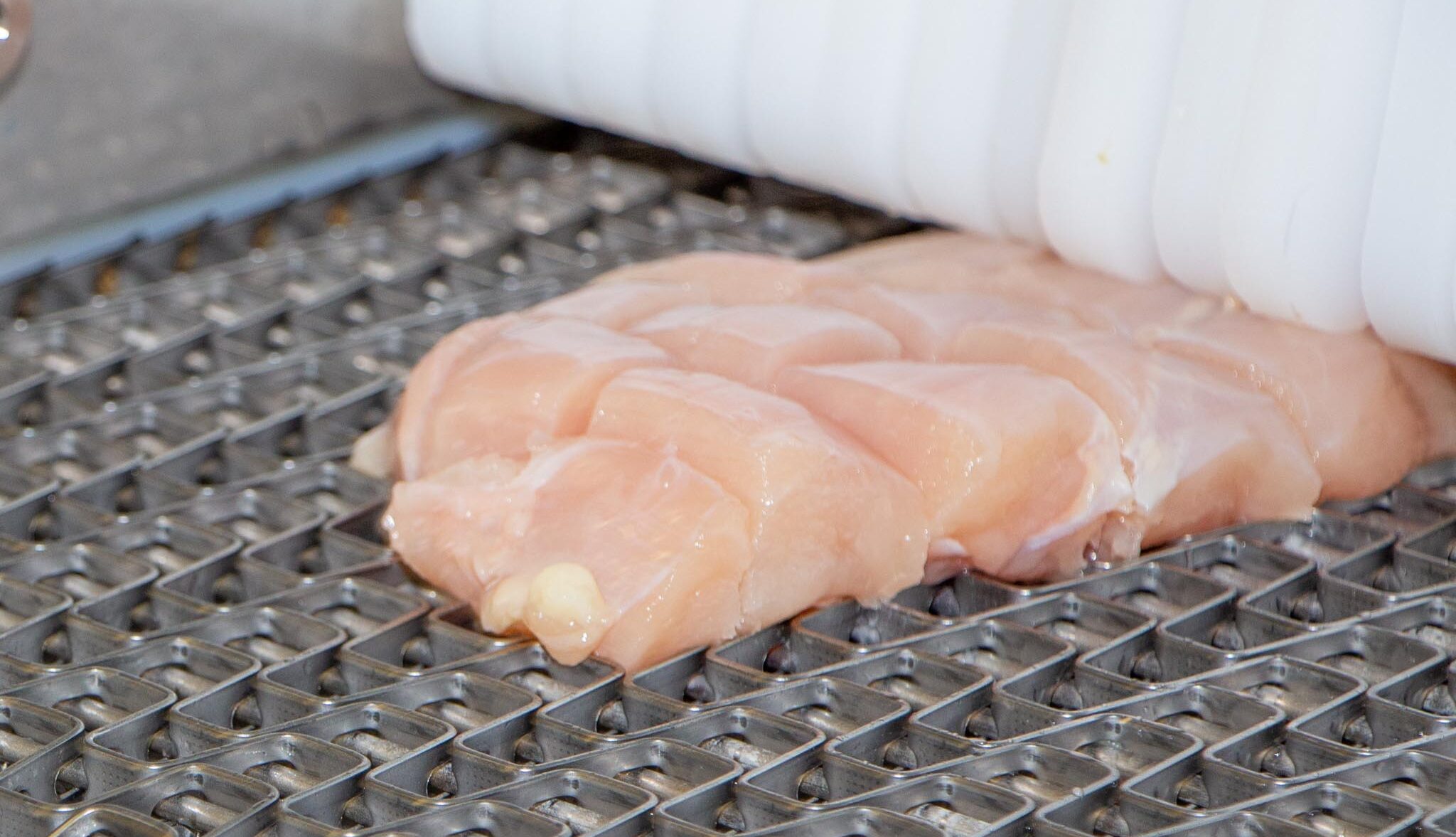
Solving the labor shortage
Similar to the poultry processors, a company specialising in donor kebab meat pieces also attended the Cutting Edge Event with the aim of finding a solution to standardize the product and minimize waste and cut-off.
“We were attending to see if we could get similar or uniform shapes of our meat product and, because this was a live test event, we were able to bring our products and test to see what was possible to accomplish with the technology,” they explained.
“The DSI can create a higher quality and value products, but the most important thing is its ability to solve today’s need for skilled personnel”
Although up until now the company has used a tenderizer before cutting the meat by hand, they were most interested in the Waterjet Portioner’s speed, capacity range and ability to automate much of the process. However, they also viewed it as offering a real solution to labor challenges.
“The DSI can create a higher quality and value products, but the most important thing is its ability to solve today’s need for skilled personnel,” they continued. “There is a challenge in the industry with the high turnover of people and the difficultly in finding skilled personnel for these types of jobs. Today’s hand cutting process requires two-three weeks’ training and it takes time to get good quality output with the change of personnel. We want to simplify the process and minimize the room for human error by automating the cut process. This would put less pressure on training and skills to get a good product.”
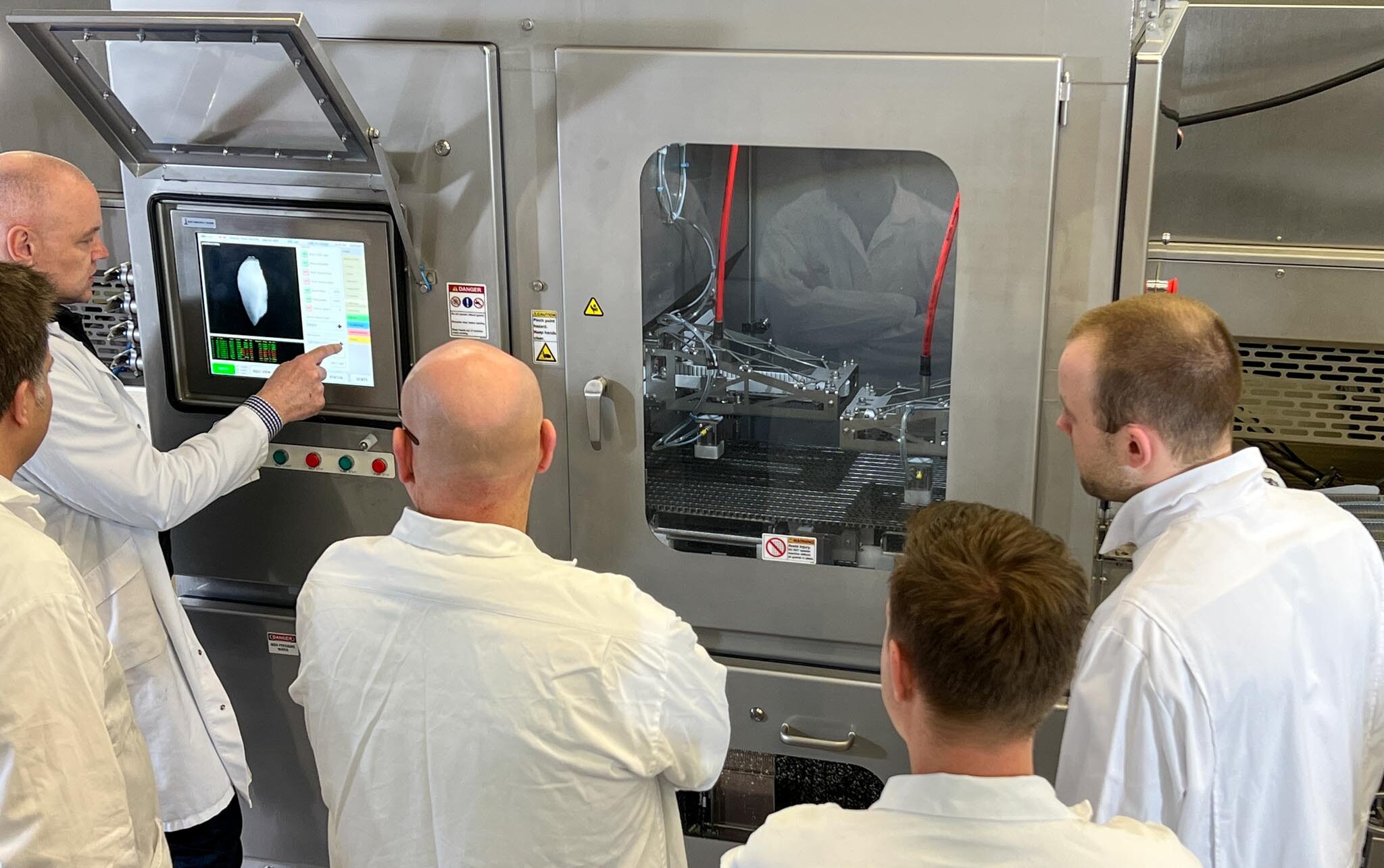
Increasing yield
For two other poultry companies attending the test event (pictured above), the DSI 812 offers clear cutting opportunities and possibilities capable of meeting its expectations. “We want to increase yield and utilize the full product in best possible way,” said one of the companies. “We want to get a fixed weight, shape and size on our diced portions, as well as creating drop shaped portions and round shapes that are not possible with blade portioning technology.”
Both processors singled out the labor-saving advantages of the DSI 812, as its ability to deliver greater cutting accuracy and product standardization. “The DSI 812 offers higher yield in combination with less labor, as well as better and more accurate portioning,” one company said, adding that they had also been impressed by the compactness of the machine and its ability to run different programs simultaneously.
“The possibility to do different portioning-steps in the same pass (e.g. portion + nuggets) on the DSI is something that we cannot do today, as well as the cutting flexibility that the DSI brings is unique,” added the other company.
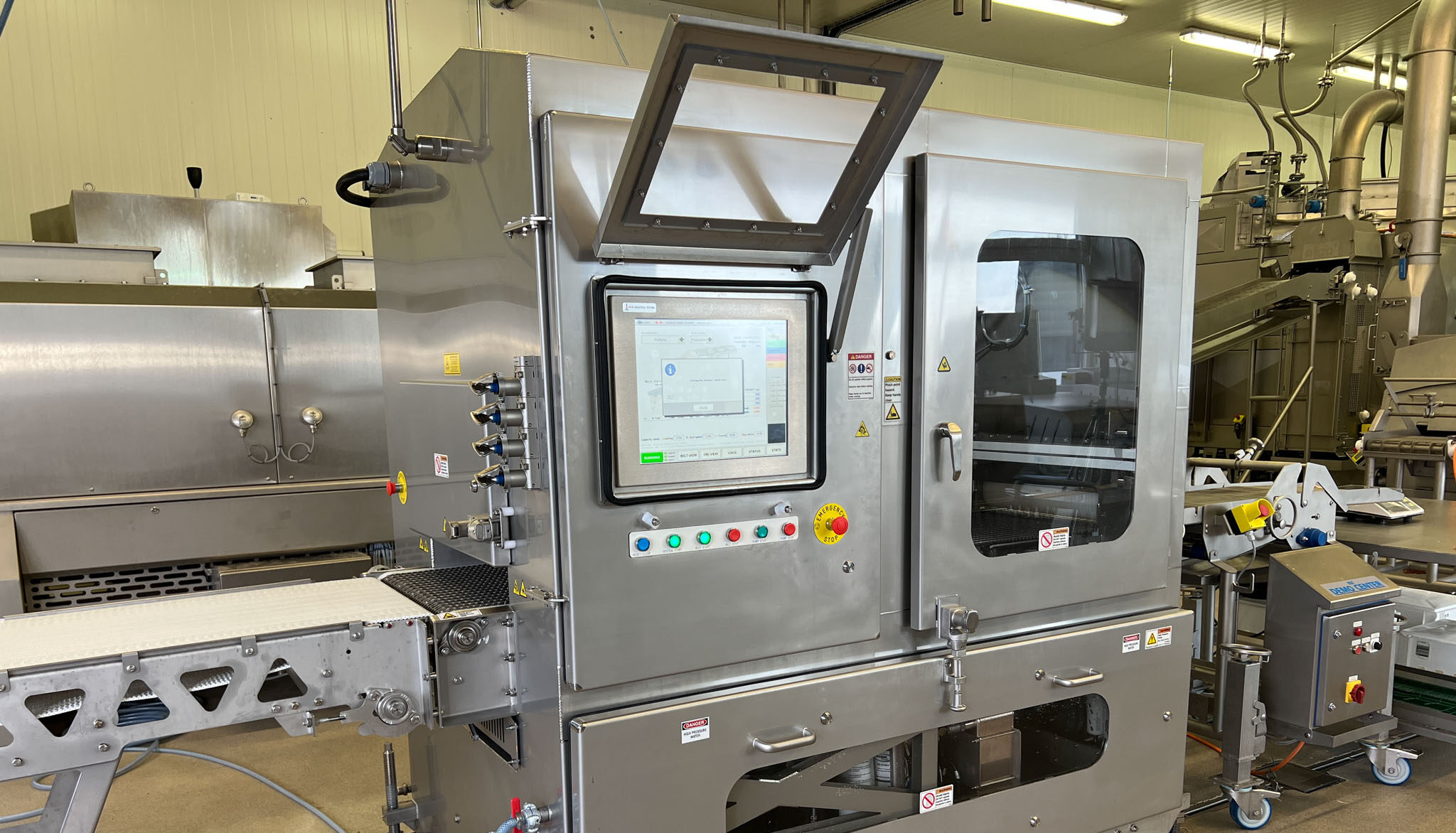
Automating protein processing
Capable of improving product yield, decreasing labor and increasing productivity, DSI Waterjet Portioning Systems have been at the forefront of automating meat and poultry cutting and portioning processes for over 30 years.
The system works by scanning products to locate fat and determine shape, thickness, weight, and other attributes, before DSI Q-LINK™ Software optimizes a cut strategy for each individual piece of raw product. Computer-positioned, high-pressure waterjets then generate complex cut shapes that make each piece as valuable as possible to maximize profits.

